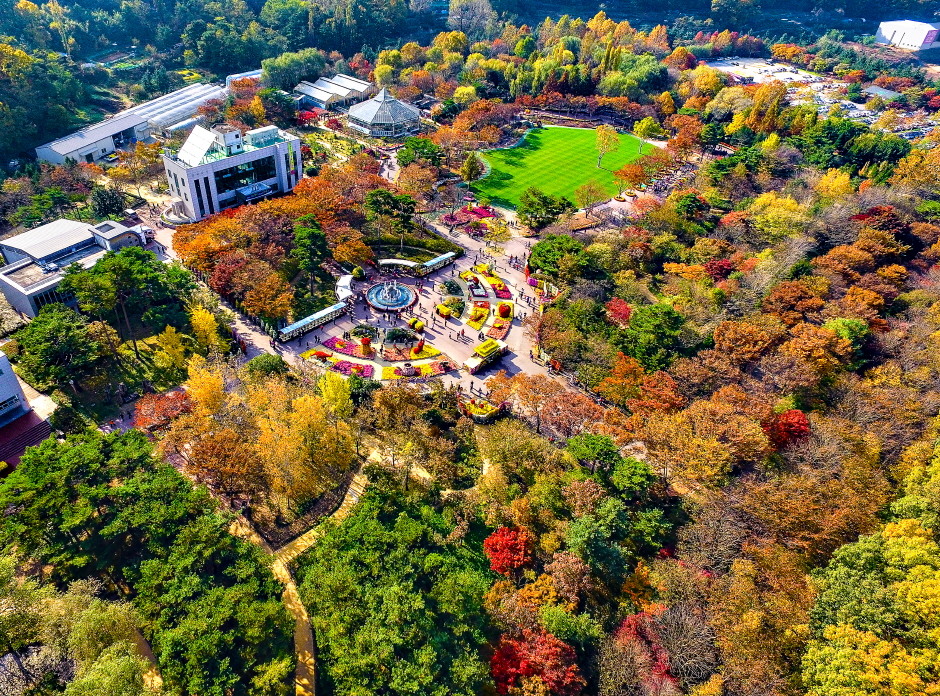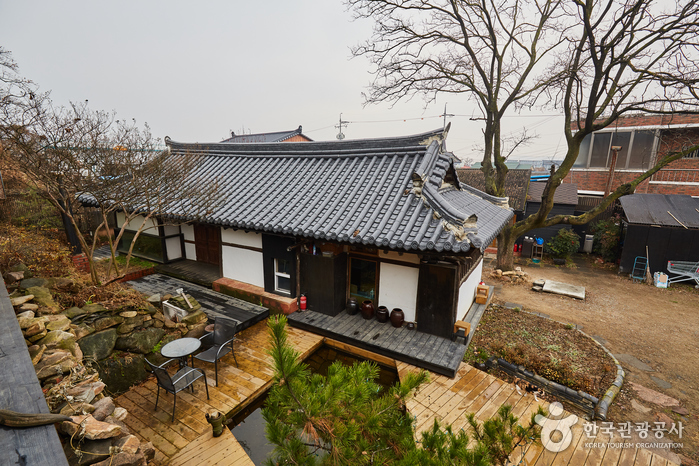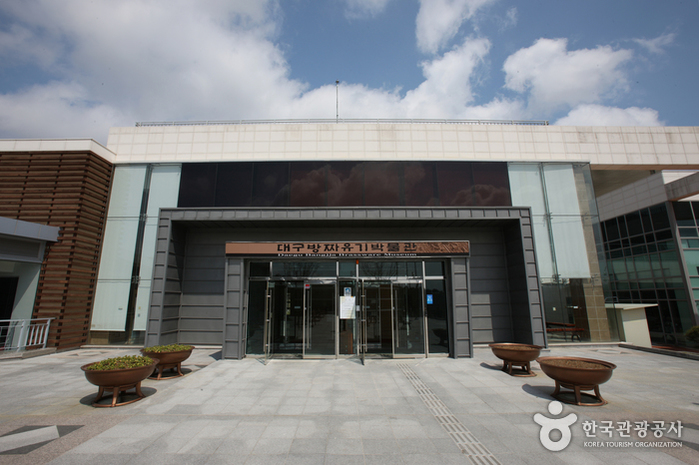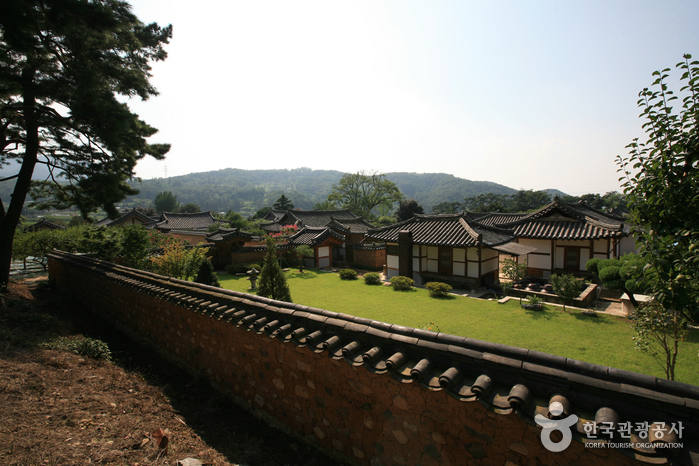Homeplus - Sangin Branch [Tax Refund Shop] (홈플러스 상인)
12.9Km 2024-04-16
183, Wolbae-ro, Dalseo-gu, Daegu
-
Gooam Farmstay Village (구암팜스테이마을)
13.2Km 2024-03-15
8-1 Guam-gil, Dong-gu, Daegu
+82-53-984-5273
Known as "Gooam" due to its rock formations resembling turtle's shell, Gooam Farmstay Village offers various activities such as harvesting agricultural produce, traditional food making, traditional games, and craft experiences. Depending on the season, there are experiences like picking strawberries, digging potatoes, picking cherry tomatoes, gathering chestnuts, and harvesting persimmons. Visitors can also participate in making bean curd, rice cakes, kimchi, catching loaches, making kite, and experiencing hanji crafts.
Homeplus - Seongseo Branch [Tax Refund Shop] (홈플러스 성서)
13.4Km 2024-04-22
1467, Dalgubeol-daero, Dalseo-gu, Daegu
-
Uniqlo - Daegu Daecheon Branch [Tax Refund Shop] (유니클로 대구대천)
14.0Km 2024-04-18
113, Jincheon-ro, Dalseo-gu, Daegu
-
Midam (미담)
14.3Km 2024-03-20
2-13 Sanghwa-ro 9-gil, Dalseo-gu, Daegu
Midam is a Korean restaurant renowned for delivering the most authentic Korean flavors through its hanjeongsik (Korean table d'hote). They specialize in serving healthy medicinal food, using natural seasonings. The restaurant offers four types of hanjeongsik course: Soheon, Sohye, Inhyeon, and Yeheon. Additionally, their menu includes hanu bulgogi jeongsik (Korean beef bulgogi set menu), hanu modum gui (grilled assorted Korean beef cuts), yeonnipbap (lotus leaf rice), and matcha borigulbi jeongsik (barley-aged dried yellow croaker and matcha set menu). The establishment is exclusively comprised of private rooms, making it advisable to book a reservation in advance.
Daegu Arboretum (대구수목원)
14.5Km 2023-11-17
342 Hwaam-ro, Dalseo-gu, Daegu
+82-53-803-7270
Daegu Arboretum is located at the site of an old sanitary landfill. The restoration of the area passed through many stages from 1996 until the opening in May 2002. It is home to more than thousands of species of plants including giant cacti, flowers, medicinal herbs, and trees in 21 gardens. The arboretum serves as an ecological education center and rest area for Daegu citizens. Ecology experience programs for students and young children are held regularly during summer vacation. Nearby attractions include Apsan and Duryu Parks, as well as Palgongsan and Biseulsan Mountains.
Asamgong
14.6Km 2021-04-09
5-5, Sawol 1-gil, Namsan-myeon, Gyeongsan-si, Gyeongsangbuk-do
+82-10-2541-1284, +82-10-4787-3314
Located in Sawol-ri, Namsan-myeon, a place known for its beautiful sandy beach, the guesthouse ‘Beautiful Life’ was built by architect Kim Gyeong-ho, and is composed of 100-year-old-hanok buildings and a courtyard with a large sophora. Designed to provide guests with a “beautiful life”, it provides both accommodation services and diverse cultural programs including exhibitions, performances, and movie screenings.
Beautiful Life was conceived as a cultural tourism space set amid quiet countryside where guests can relax by enjoying exhibitions and performances, reading a book, listening to music, or getting lost in thought amid the serene atmosphere of the house. The owner transformed the abandoned house into a beautiful hanok stay after falling under the charm of the quiet location and the old house with its beautiful old tree and well.
The guestrooms include Jewoldang, Yeorakdang, Uiyeoldang, and Heosimjeong. The first of these is a 100-year-old hanok structure with a tiled roof, which can be rented in its entirety. Its name, Jewoldang, roughly means “a place to pick up the moon” because the moon is visible above the sephora in the courtyard from the daecheong (wooden floor) on bright moonlit nights. Its ‘ㅡ’-shaped structure and ceiling rafters are original features of the old hanok, while the kitchen and bathroom were entirely renovated, as was the attic on the second floor, lending a special atmosphere to the house.
As for the Yeorakdang, which means ‘a house to enjoy together,’ it was converted from a storeroom for apples into a building that can accommodate groups of guests and also screen movies. The Uiyeoldang, meaning ‘a house to discuss and study together,’ was built by transforming the haengrangchae (servants’ quarters) and the stable into a reading space and a seminar room, respectively. Finally, the Heosimjeong, meaning ‘a pavilion where one can empty one’s mind’, is the ideal place for relaxing in small groups. Each of these four buildings is built in a modern style with wooden materials, glass windows, and staircases. There is also an outdoor stage equipped with a sound system for special performances.
Daegu Bangjja Brassware Museum (대구 방짜유기박물관)
14.6Km 2019-03-19
29, Dojang-gil, Dong-gu, Daegu
+82-53-606-6171~4
Bangjja Brassware Museum is the first original museum of its kind in Korea. Unknown to many, Bangjja Brassware possesses a host of beneficial attributes and is used both for storing food and for growing plants. One of its primary functions is that of cultivating nutritive elements.
The Bangjja Brassware Museum in Daegu has numerous brassware products on hand that were generously donated by Lee Bong-Ju. His collection was subsequently appointed intangible cultural asset number seventy-seven by the Korean government.
The museum’s layout is rather intricate. Both the basement floor and second ground floor consist of three exhibit halls, a data research hall, a cultural experience hall, a video education hall, an outdoor stage, and several planning exhibit halls. In the Brassware Cultural Hall, a display boasting Korea’s history regarding various kinds of brassware, together with other relevant information is on hand for visitors. In the nearby Donation Hall, a National Intangible Cultural Heritage, Lee Bong Ju’s luxury brassware collection, is on display. In the Reappearance Hall there are makeshift displays illustrating where brassware was first produced and where it was traded.
Aritaum - Daegu Catholic Univ. Branch [Tax Refund Shop] (아리따움 대가대)
14.9Km 2024-04-18
1F, #103, 58, Hayang-ro, Hayang-eup, Gyeongsan-si, Gyeongsangbuk-do
-
Inheung Village (인흥마을)
14.9Km 2020-04-14
16, Inheung 3-gil, Dalseong-gun, Daegu
+82-53-668-3162
The descendants of Mun Ik-jeom, who are known to have
brought the Nampyeong Mun clan to prosperity, reportedly came to Daegu about 500 years ago. It was during the time of Mun Gyeong-ho (1812-1874), the 18th descendant of Mun Ik-jeom, that the clan became established in Inheung. Mun executed his plan to create a village for the clan by putting down roots in the old site of Inheungsa Temple, a large-scale temple in the Goryeo era.
Yonghojae, which is a place for offering ancestral memorial services, is the first building established at the village constructed before or after 1920. The first residential building was built around the late 1800s in the form of thatched cottage. During the course of a hundred years, the village developed into what it is today. Featuring about 70 or so tile-roofed homes, Inheung Village is only about 200 years old but it is a great example of traditional residential homes of the em>yangban upper class in the Yeongnam region. The harmony between the way the village is organized and the surrounding landscape is unique and rare.

![Homeplus - Seongseo Branch [Tax Refund Shop] (홈플러스 성서)](http://tong.visitkorea.or.kr/cms/resource/07/2888907_image2_1.jpg)
![Uniqlo - Daegu Daecheon Branch [Tax Refund Shop] (유니클로 대구대천)](http://tong.visitkorea.or.kr/cms/resource/37/2888537_image2_1.jpg)



![Aritaum - Daegu Catholic Univ. Branch [Tax Refund Shop] (아리따움 대가대)](http://tong.visitkorea.or.kr/cms/resource/56/2883756_image2_1.jpg)

 English
English
 한국어
한국어 日本語
日本語 中文(简体)
中文(简体) Deutsch
Deutsch Français
Français Español
Español Русский
Русский